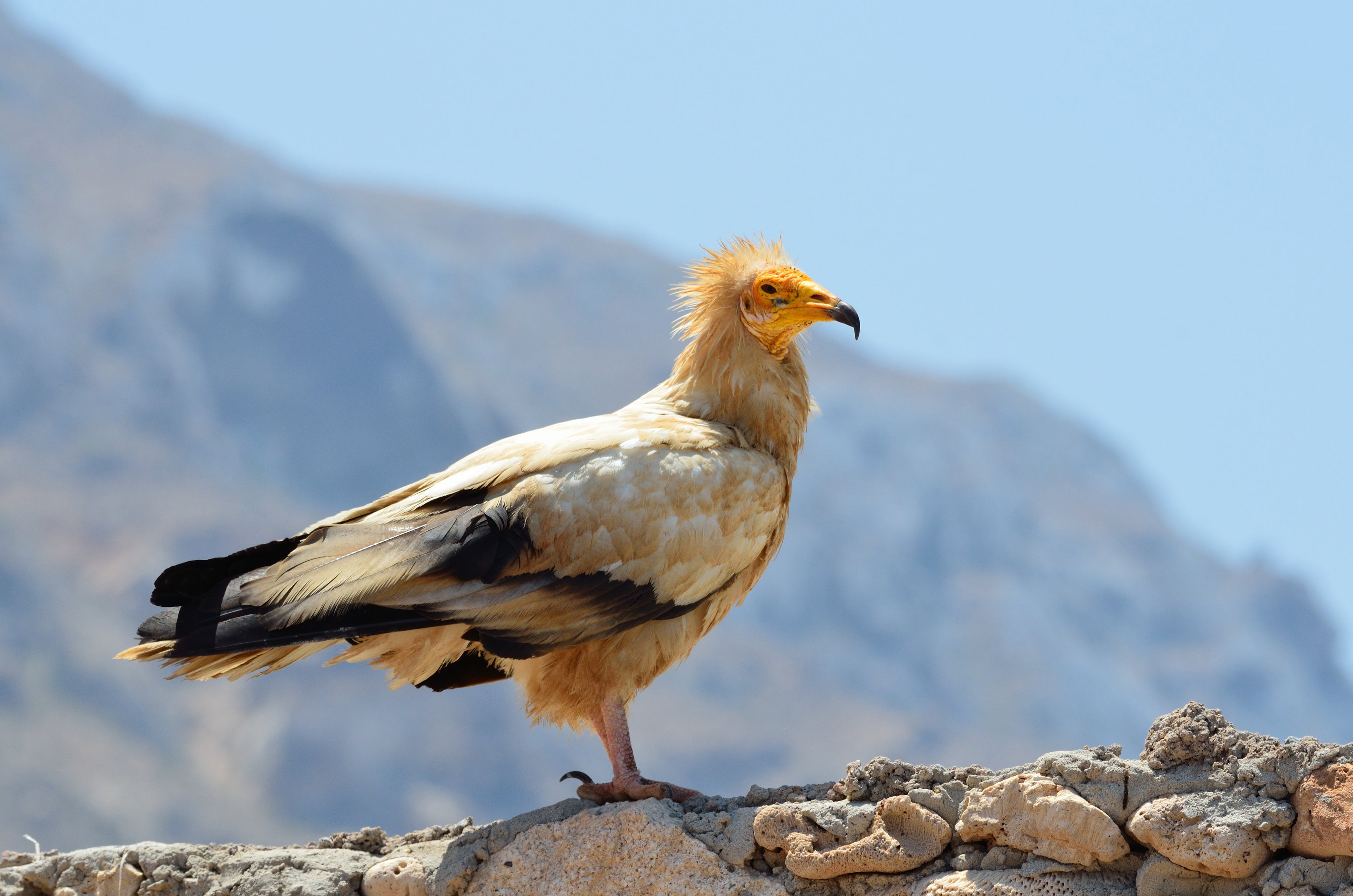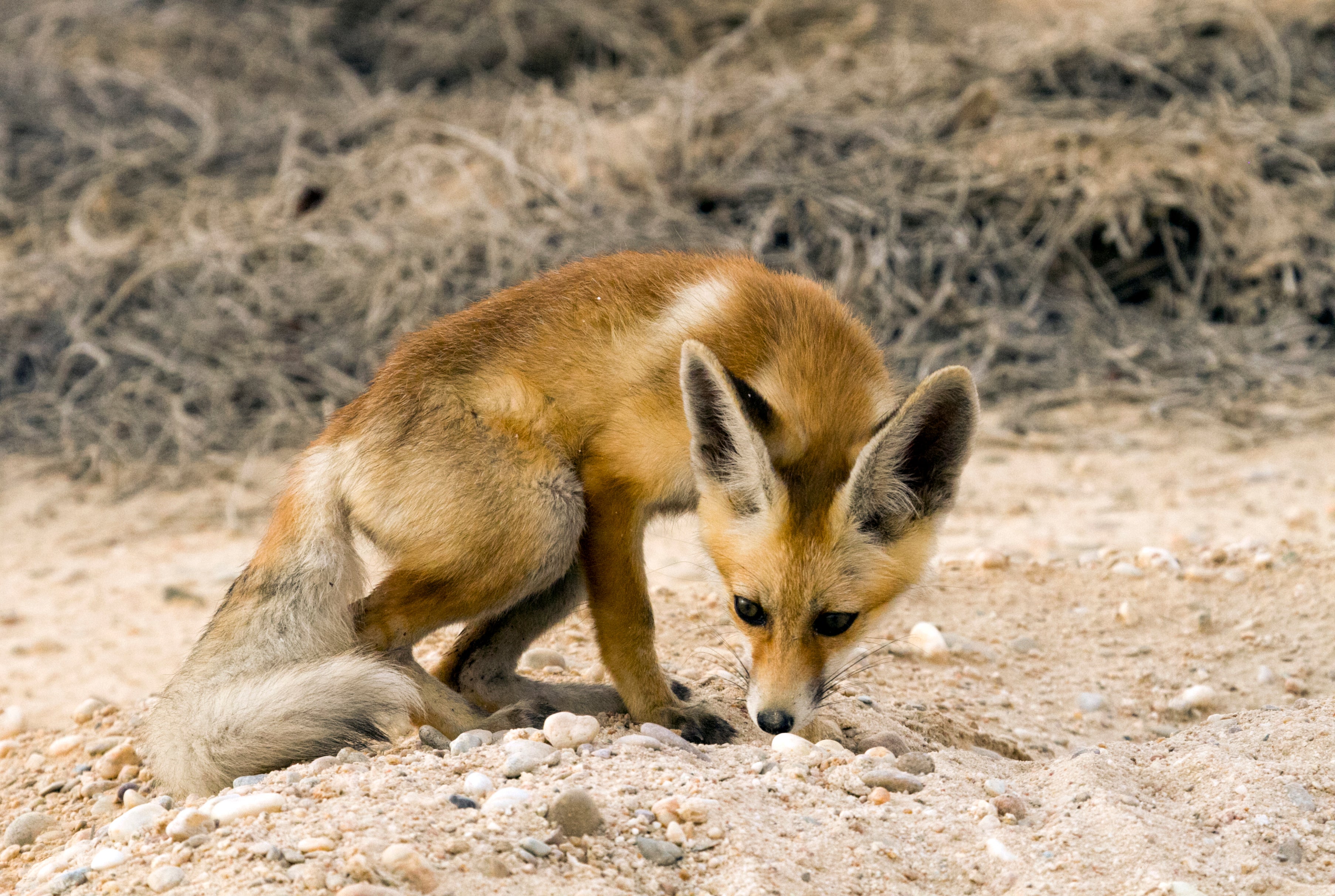Defending Dubai’s last patch of pristine desert and its animals – how to see the ‘other side’ of the emirate
A conservation project working to safeguard the rare flora and fauna of the Dubai desert makes for a remarkable citizen science-focused holiday, finds Chris Zacharia

Where dune meets sky, sketched in the sand like a hieroglyph, we find our first sign: the jagged ‘w’ of two talon prints.
These prints are fresh, and they justify our 5am start. By midday, the sand’s diary of crisscrossing tracks left by nocturnal hunters like the pharaoh eagle owl have been erased by the remorseless wind. A species almost extinct in this region, the Dubai Desert Conservation Reserve (DDCR) has helped to reintroduce it. But to prove the owl’s presence – and the value of the reserve’s efforts – we need more than prints; we need evidence.
Silhouetted before me is Naswa, a cathedral of rock covered in crevices that could well shelter owl nests. “I’ll look into this one, you take the one on the left,” says Pete, who’s been on this expedition three times before, gesturing to two gaping crags. Like bathers dipping toes into boiling bathwater, we test each step – duly sending showers of stones down the mountainside.
Within minutes Pete has found a pellet: a thumb-sized clump of undigested bone and hair, regurgitated by an owl after breakfasting on a rodent or two. We record the coordinates on the GPS, and clamber around spires of stone, hot on the scent. Eventually the sunrise illuminates something even more special: a shapely feather, in the pharaoh eagle owl’s regal livery.

“This is why the data you guys collect is so important,” says Basil Roy, one of the reserve’s conservation officers, as he examines the feather back at the DDCR office. “Dubai is coming closer. There’s only so much coastline to build on. And then...” We all know what comes next.
For the DDCR, the approaching wave of highways, concrete and tourist traps isn’t just an eyesore. It’s an existential threat. A haven for wildlife and a beacon for biodiversity, the reserve is one of the most successful conservation projects in the Middle East – representing 5 per cent of Dubai’s total territory. Yet with the Emirati economy booming, every square metre of territory is a potential Ferrari World or Barbie Land. After all, it’s only desert, right?
“Overcoming the myth that the desert is empty is one of our biggest hurdles,” says Roy. “We have to prove that there is something worth protecting here.”
Read more on sustainable travel:
Dubai’s desert is home to 560 species of flora and fauna. Properly maintained, it’s a rich habitat. But overfarming and unrestrained development have decimated the native ghaf trees and firebush, destabilising the ecosystem. Today, it’s so depleted that even locals dismiss it as a wasteland.
Roy, along with colleagues María José Martín and Gerhard Erasmus, are here to prove otherwise. But monitoring 225 sq km with just three scientists is demanding. If the reserve is to demonstrate its worth and resist attempts to encroach on its pristine sands, it needs empirical, up-to-date evidence of its biodiversity.
It needs, in other words, Biosphere Expeditions. Biosphere provides conservation projects like the DDCR with budding citizen scientists from all over the world, people who prefer getting stuck in rather than getting away from it all. The award-winning charity trains volunteers to be the boots on the ground, gathering the data upon which conservation depends. In return, expeditionists get to contribute while on the frontlines of global wildlife conservation.

Since 2012, Biosphere’s volunteers have helped the DDCR survey its wildlife, from taking DNA samples of Gordon’s wildcat to mapping the dens of sand foxes. As well as this year’s survey of the pharaoh eagle owl, the DDCR is also relying on us to complete the annual quadrat survey of its wildlife – dividing the entire reserve into 64 two-kilometre squares and dispatching us volunteers to record the wildlife in each one, quadrat by quadrat.
“If we can prove that fewer animals are seen at the perimeter this year compared to last,” Roy explains, “we can fight back against the development happening on the reserve’s borders.”
That’s why I’m standing on a dune with three Brits, two Germans and an Italian, in the mid-afternoon heat. Sweat drips onto my binoculars and my hands are shaking, but I keep my eyes fixed on the creature posing atop a distant dune: an Arabian oryx.
You can see them from a mile away. With no natural predators, they perch up high to catch the wind’s moisture, their brilliant white coat deflecting the sun. Thanks to the DDCR’s conservation efforts, the oryx is the only species to have gone from ‘extinct in the wild’ to merely ‘vulnerable’.

Arabian gazelle and sand gazelle are harder to spot, and harder still to tell apart: “Always look at the neck, it’s a lot thicker on the sand gazelle,” advises Pete, our four-tour veteran. Both are now so abundant that you can barely drive a few metres in the reserve without your heart melting at the sight of a swan-necked Bambi, ears akimbo, watching as you pass.
The skies are teeming, too: a southern desert shrike, a bird that impales its prey upon spiky branches, oil-black desert ravens and even a critically endangered Egyptian vulture. But most common are invasive doves, sparrows and pigeons. A decade ago, the stretch of highway linking the DDCR to Dubai was two-lane; now it’s eight, with housing estates mushrooming out around it.
A bird cries and the fox leaps away to its den at dawn, as it has for a thousand centuries. We, not it, are the interlopers.
“And with people,” Roy tells us, “come scavengers like pigeons and sparrows, who are flocking into the DDCR and outcompeting native species.”
The next morning, we head to Al Faqa in the reserve’s remote southwest for a bird survey. The quiet is absolute. Waves of mist make islands of the dunes, their oryx marooned like explorers shipwrecked amid uncharted oceans.
But we’re detained by a rarer sight. A step away from the track, the wise eyes of an Arabian red fox, looking back at us over its slender, silvery shoulder.
The wind blows. The fox stares. Time stops.
Its ears twitch this way and that; the whiskered dignity of its expression suggesting it knows more than it can tell us. Can we understand?
A bird cries and the fox leaps away to its den at dawn, as it has for a thousand centuries. We, not it, are the interlopers.
After a week in the reserve, we cross the perimeter back into the “real” world. Soon the horizon erupts with sci-fi skyscrapers, improbable as a mirage, the dream of a desert people longing for plenty.

Dubai’s incredible megacity is expanding. It turns desert into wealth, wealth into carbon, and carbon into intensifying, deadly heat. And standing in its path: scattered oryx, a heard of gazelle, a fox at dawn. Three scientists and some volunteers with clipboards.
The DDCR turns desert into the living ecosystem it once was. But it doesn’t make much money. It’s not Ferrari World or Barbie Land. How long can a ripe chunk of virgin land survive?
Through rivers of tarmac and acres of concrete, Dubai’s glass-and-steel shimmer seems to offer everything. But there’s no gazelle, no oryx, no pharaoh eagle owl. In terms of wildlife, Dubai’s urban sprawl is – there’s no other word for it – a desert.
As to which riches are worth protecting? Our answer to that will shape the century.
Travel essentials
Biosphere Expeditions offers an eight-night visit to the Dubai Desert Conservation Reserve, including food, training and partial transfers, for £1,704 per person. The charity runs a further eight expeditions worldwide, in countries including Malawi, Sweden and Thailand.
Join our commenting forum
Join thought-provoking conversations, follow other Independent readers and see their replies
Comments
Bookmark popover
Removed from bookmarks